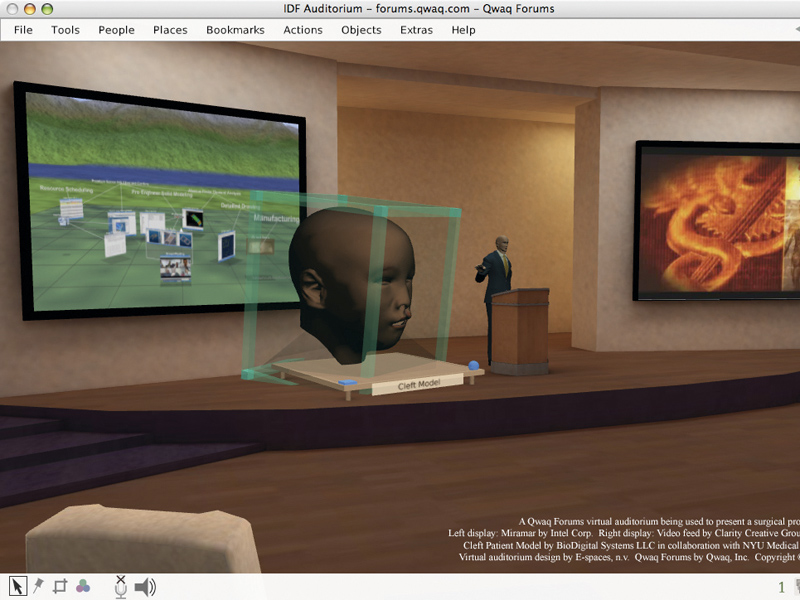Working in a virtual world

The use of virtual worlds and genuine 3D interfaces for anything other than fun and frolics has been a long time coming.
Granted, virtual worlds such as Second Life get an awful lot of media coverage, but until recently they remained a niche activity, even among the gaming community.
However, thanks to years of research by Intel and a collaborative effort with a specialist company known as Qwaq, 3D visual metaphors in general and virtual worlds in particular are becoming the latest business productivity tools, used for all kinds of collaborative work, from conferences and training sessions to work groups and project management.
The story of Intel's involvement in 3D interface and collaboration technology is actually rather convoluted. To make sense of it all, PC Plus met up with Intel's Cindy Pickering at the recent IDF conference in San Francisco. According to Pickering, it all started in the late 1990s with a project known as Miramar in which Intel Architecture Labs was investigating the use of 3D metaphors as alternatives to conventional, fl at 2D workspaces.
3D multitasking
The research began by observing how client PC users coped with complex multitasking and then studying the effects of adding a third dimension to the user interface. "Going back and forth between lots of windows introduces a lot of task overhead. Having that third dimension allows you to put things aside in a different way that means they're still visually available, but without dominating the virtual workspace," Pickering explains.
In simple terms, Miramar represents documents as thumbnail previews floating in space. Through the use of 3D space, complex relationships between files and documents – as well as concepts such as context and recency – can be maintained and grasped rapidly by users. The screenshot below is an example of a typical Miramar setup.
Sign up for breaking news, reviews, opinion, top tech deals, and more.
Despite the project providing some fascinating insight and feedback – and partly because typical Client PCs in the late 1990s and early 2000s simply didn't have enough performance to render detailed 3D scenes in real time – Miramar was effectively shelved after several years of ongoing development.
Until, that is, Intel Research Group began looking at software tools for collaborative business environments. Enter Cindy Pickering and a group of researchers known as the Virtual Collaboration Team. Pickering and her colleagues were researching the issues surrounding collaboration software for globally distributed organisations such as Intel.
While the early days of the Miramar project were largely focused on individual productivity, this new effort was investigating ways that the PC could be used to make team and project work more efficient within an organisation as large as Intel.
Sheer geographical distance and varying time zones can obviously present barriers to effective collaboration, but even when all members of a given work group are based in the same location, getting together can be tricky. Meeting rooms must often be booked in advance and the shared nature of resources means that a work group must completely pack up and remove its kit at the end of meetings.
"The early prototype we came up with was a little like an interactive business card," Pickering says. The idea was to allow team members to interact expressively. Each member's 'card' contained an image or video, contact information, current location, personal biography and project status.
In fact, it was a bit like a business-oriented version of Facebook. But that was just the beginning. "We were also exploring the notion of a virtual meeting space," explains Pickering. The space wouldn't just enable individuals to meet in real time; it would also allow members to use the space asynchronously, share pieces of work in progress, and provide a persistent space for a given project or work group.